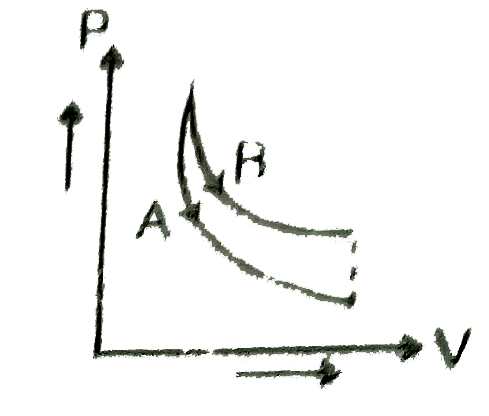e/m ratio in case of anode ray experiment is different for different gases.
The ion of gases formed after the ejection of electron are different of gas is different.
Statement-1 is True, Statement-2 is True, Statement-2 is a correct explanation for Statement-1
Statement-1 is True, Statement-2 is True, Statement-2 is NOT a correct explanation for Statement-1
Statement-1 is True, Statement-2 is False.
Statement-1 is False, Statement-2 is True.
The correct Answer is:A
To solve the question regarding the em ratio in the anode ray experiment and its dependence on different gases, we can break down the explanation into clear steps:
1. Understanding Anode Rays:
- Anode rays are streams of positively charged ions (cations) produced when a gas at low pressure is subjected to a high voltage. This process leads to the ionization of gas atoms.
Hint: Remember that anode rays consist of cations formed from the ionization of gases.
2. Ionization Process:
- When the gas is ionized, it loses electrons and forms cations. For example, if we have gas A, it can lose electrons to form cations (A⁺).
Hint: The loss of electrons from the gas atoms is crucial for the formation of cations.
3. Different Gases, Different Ions:
- Different gases have different atomic masses and structures. Thus, when subjected to the same conditions, they will produce different cations. For instance, gas B will form cations (B⁺) which are different from those formed by gas A.
Hint: The type of gas determines the specific ions produced during ionization.
4. Calculating the e/m Ratio:
- The em ratio (charge-to-mass ratio) of the cations formed will vary depending on the mass of the cation and its charge. Since different gases produce cations of different masses and possibly different charges, the em ratio will not be constant across different gases.
Hint: The em ratio is influenced by both the charge and the mass of the ions produced.
5. Conclusion:
- Therefore, the statement that the em ratio is different for different gases is true. Additionally, since different gases produce different ions upon electron ejection, the second statement is also true. The second statement serves as a correct explanation for the first.
Hint: Both statements are true, and the second statement explains the first.
Final Answer:
Both statements regarding the em ratio in the anode ray experiment and the different ions formed from different gases are true, with the second statement providing a correct explanation for the first.
- Anode rays are streams of positively charged ions (cations) produced when a gas at low pressure is subjected to a high voltage. This process leads to the ionization of gas atoms.
- When the gas is ionized, it loses electrons and forms cations. For example, if we have gas A, it can lose electrons to form cations (A⁺).
- Different gases have different atomic masses and structures. Thus, when subjected to the same conditions, they will produce different cations. For instance, gas B will form cations (B⁺) which are different from those formed by gas A.
- The em ratio (charge-to-mass ratio) of the cations formed will vary depending on the mass of the cation and its charge. Since different gases produce cations of different masses and possibly different charges, the em ratio will not be constant across different gases.
- Therefore, the statement that the em ratio is different for different gases is true. Additionally, since different gases produce different ions upon electron ejection, the second statement is also true. The second statement serves as a correct explanation for the first.
Both statements regarding the em ratio in the anode ray experiment and the different ions formed from different gases are true, with the second statement providing a correct explanation for the first.
Topper's Solved these Questions
Similar Questions
Knowledge Check
Two electrons present in M shell will differ in
Aprincipal quantum numberBazimuthal quantum numberCmagnetic quantum numberDspin quantum number
Name three different forms of iron.
View SolutionName three different forms of iron.
View SolutionName three different forms of iron.
View SolutionWhat are the different forms of algae?
View SolutionDifferent forms of a gene are called
View SolutionIn figure, A and B are two adiabatic curves for two different gases. Then A and B corresponds to:

View SolutionTwo different gases at the same temperature have equal root mean square velocities?
View Solution
